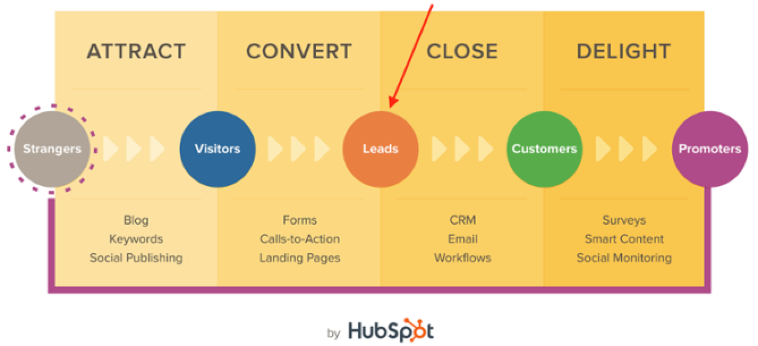Just what you were looking for: a marketing jargon-buster. Phew.
At Articulate, we pride ourselves on being real good with words and stuff. That’s kind of our thing. We enjoy taking complex subjects – like technology – and talking about them in a human way. It helps businesses connect with clients. Tech is full of jargon, from ‘Big Data’ to ‘Edge Computing’, and everything has a bloody ‘solution’ at the end of it. It’s all rather clever sounding, but it doesn’t tell potential customers anything useful. We like cutting through that noise.
But, as a marketing agency that works with B2B companies, we find our radar gets a little fuzzy when it comes to our own language – the language of inbound marketing. We use it every day, and so it’s easy to forget that not everybody knows what a ‘warm lead’ is. (Some kind of cheese?)
So, in the interest of taking our own medicine, here’s a demystifying reference guide to some marketing terms that we find ourselves using all the time – and some words we might have made up.
Also, see our ‘Devil’s Marketing Dictionary’ for a curated, tongue-firmly-in-cheek run-down of marketing and management terminology.
Blog/ungated content
A blog is a piece of content that answers a question or solves a problem. It is a useful, entertaining light read, and normally sits between 500-1000 words (but can be longer). Ungated content is free content that is accessible to all without filling in a form. A blog is not for selling your product, it’s for helping people and gaining their trust.
Call-to-action (CTA)
A CTA is a button, link or image that is embedded on a website, often within a blog. This directs readers to another page with an offer of some more content, often something longer or more specialised like an e-book or checklist, which they can get in exchange for details such as their email address.
e.g:

CTR (click-through-rate) and conversions
There are some metrics you want to pay attention to and there are some that are simply vanity metrics. Traffic is great if you want to build authority and ‘get famous’, but unless that traffic actually engages with your business, then you aren’t making any money. The first step to turning a visitor into a customer is to convert traffic into leads, so pay attention to how many people actually ‘click through’ and how many ‘convert’.
Curated social
Curating content on social media simply means finding relevant content that other people have written and showing it to your own audience. For example, retweets on Twitter or shares on Facebook.
Follow-up email (FU – no, not that)
An FU email is not a rude word. We simply mean an email that follows up on an action. If someone has downloaded a white paper, they might also get sent a link to download it in their email, just in case they want to look at it later.
GDD (growth-driven design)
Growth-driven design is a term that’s been hanging around over the last few years. It’s a process of taking a launch-pad website and getting it up and running really quickly, then making improvements over several ‘sprints’. The launchpad site might not have everything you want on it, but it will work better than your current one, and changes will be based on user data.
Inbound marketing
'What is inbound marketing?', we hear you ask.
Inbound marketing uses content and other factors to drive people who might be ideal customers to your website with targeted information and branding. Outbound marketing is asking strangers if they’d be interested in your service. Guess which one we prefer.
There are four stages of the inbound methodology:

-
Attract: Draw people to your site. Use attractive, free information to get site visitors reading or watching your content.
-
Convert: Get people’s contact information and consent to contact them again. Use a form to gather this information.
-
Close: Qualify people, to see if they are a potential customer. Send them offers and information that might be useful to them specifically.
-
Delight: Turn customers in promoters so they can do your marketing for you. This is a great way of getting referrals.
Landing page/thank you page (LP/TY)
A landing page is the end-point for a CTA. It will have some information about the piece of content that is on offer, perhaps an inviting image or video, and – most importantly – it will have a form asking for things like a name and email address. This allows you to convert a visitor into a lead that you can contact again.

Lead
A lead is someone who has provided your business with some personal information, such as an email or phone number, and has specified that by providing this information they are happy to be contacted again with email marketing. Just don’t annoy them.
MQL/SQL
A marketing-qualified-lead (MQL) or ‘warm lead’ is a lead that has interacted with your business quite a lot, perhaps by downloading a few pieces of content or by clicking on several emails. They are highly engaged with your business. A sales-qualified-lead (SQL) is someone who has indicated that they are ready to speak to a sales person. They may have requested a meeting or demo.
Nurture/email marketing
Nurturing is the act of taking a site visitor through the sales funnel, which is simple a way of filtering out who is actually a potential customer and who isn’t ready (or the right person) for your product or service. Email marketing is a great way to use automated emails to nurture leads into MQLs, and MQLs into SQLs.
Workflows are automated emails the are delivered to a person in a sequence, usually with a few days or even weeks between each email send. They are triggered by an action and can lead to certain outcomes, such as a lead being marked as an MQL or them being invited to join an event or webinar.
Persona
A persona, as Hubspot puts it, is ‘a semi-fictional representation of your ideal customer based on market research and real data about your existing customers.’ We usually give them names like Fried Fred the account manager or Ambitious Abigail the CEO. The idea is that you write content that speaks to that persona.
PPC (pay-per-click)
PPC is pay-per-click advertising, which can be used as part of the inbound methodology to boost traffic and target ideal customers. This isn’t ‘spend all your money on Google Adwords’; this is ‘allocate some resources to drive specific audiences to a landing page’, usually best used when you launch a new piece of longer content.
Premium/gated content
Premium content is long-form or specialised content that is kept behind a landing page, like a white paper, checklist, calculator or e-book. It has to offer a lot of value as you are asking site visitors to give up personal information in exchange for receiving it.
SEO/keywords
Search engine optimisation is the act of making your website rank well (as in, page one of Google) for certain relevant search terms. By using long-tail keywords and creating well-written content on an optimised, authoritative site, your content can become the best answer on the internet for a particular subject.

ARTICULATESE
We definitely either made these up or stole them from somewhere. Either way, these are some terms that are a bit more niche to us.

(Not all of our meetings involve wine, but when they do. Oh boy. They do.)
Advertising treatments/creative
We call pay-per-click advertising ‘treatments’. Don’t ask why. We can’t remember. We also call the copy for these ads ‘the creative’, as in ‘Can you do the creative for these LinkedIn Ads?’. The word is not used the same way in any other context…
Campaign
When we say ‘campaign’ most of the time we mean a content campaign, which usually looks like a piece of premium content plus other supporting content, such as blogs, infographics and pillar pages (more on those later). These are all centred on a particular topic, creating a ‘topic cluster’, and are intended for a particular audience.
Converty
If something is getting lots of leads in, such as a social media campaign, or something looks like it might work really well based on past data, like a nicely designed CTA, then we call it ‘converty’. That’s a converty dress you have on. We made this website very converty.
Data-driven
When we say we’re data-driven, what we mean is we use our insight and expertise to make plans, then we look at the data to ensure that our choices are based on sound logic. Not the other way around. Hypothesis, experiment, conclusion. If you base all your decisions on data alone, then you can end up reacting to arbitrary fluctuations or ‘patterns’ when you don’t need to. It’s like how you bought a mini-fridge off of Amazon one time and now it thinks you want to collect mini-fridges.
Happiness/CHO/HHH/happy breakfast/poddle
Company culture is a big deal at Articulate. We pay attention to it. You know, in case it makes any sudden movements. Part of that is our Chief Happiness Officer (CHO) sets up regular points of connection for our remote working team with things like ‘happy half hours’ – our video conference equivalent of going to the pub.
Hedgehog
A hedgehog is a service you offer. We do things like marketing strategy, content, SEO, social media, websites etc.
Hoglog
Hoglog, or Hedgehog logic, is the idea of basing all your strategy around your hedgehogs (services). So you might have ‘disaster recovery’ as a service if you’re an IT company that provides cloud-based ‘solutions’ to businesses. Then you can have several pieces of premium content that cover various aspects of DR, and blogs that do the same, and email workflows and so on. It’s a joined-up marketing strategy that is designed to scale.
Human social
It’s a modern phenomenon these days. People want to become brands and brands want to become people on social media. So we call our technique ‘being human on social media’ or ‘doing human social.’ It’s all about helping businesses connect without being spammy.
Ideate
Look, we know it’s a wanky word. But you try telling someone to ‘Come up with some ideas for this content campaign’ vs ‘Ideate a content campaign’ and you’ll see why we use it.
Iterative
Using iterative processes means making improvements on an ongoing step-by-step basis.
Merge, purge and polish (MPP)
We’re quite proud of this one. For some businesses, they have a lot of blog content already. Maybe they’ve been churning out blogs every week for ten years. Some of that content is no longer useful, some is verging on duplicate content, and some just need a tidy up. We use the MPP method to make the most of content that is already there, with minimal input for maximum output. Good idea, right?
Pillar page
A pillar page is another term we stole from Hubspot. It is a long piece of content designed to provide the ultimate comprehensive answer on a broad topic. This one is about SEO for tech companies.
Points
We work on a points pricing system that means our clients pay by outcome and not just by hours spent at a desk. Find out more about it here.
Soup
Everything is soup. Everything. Think about it.











